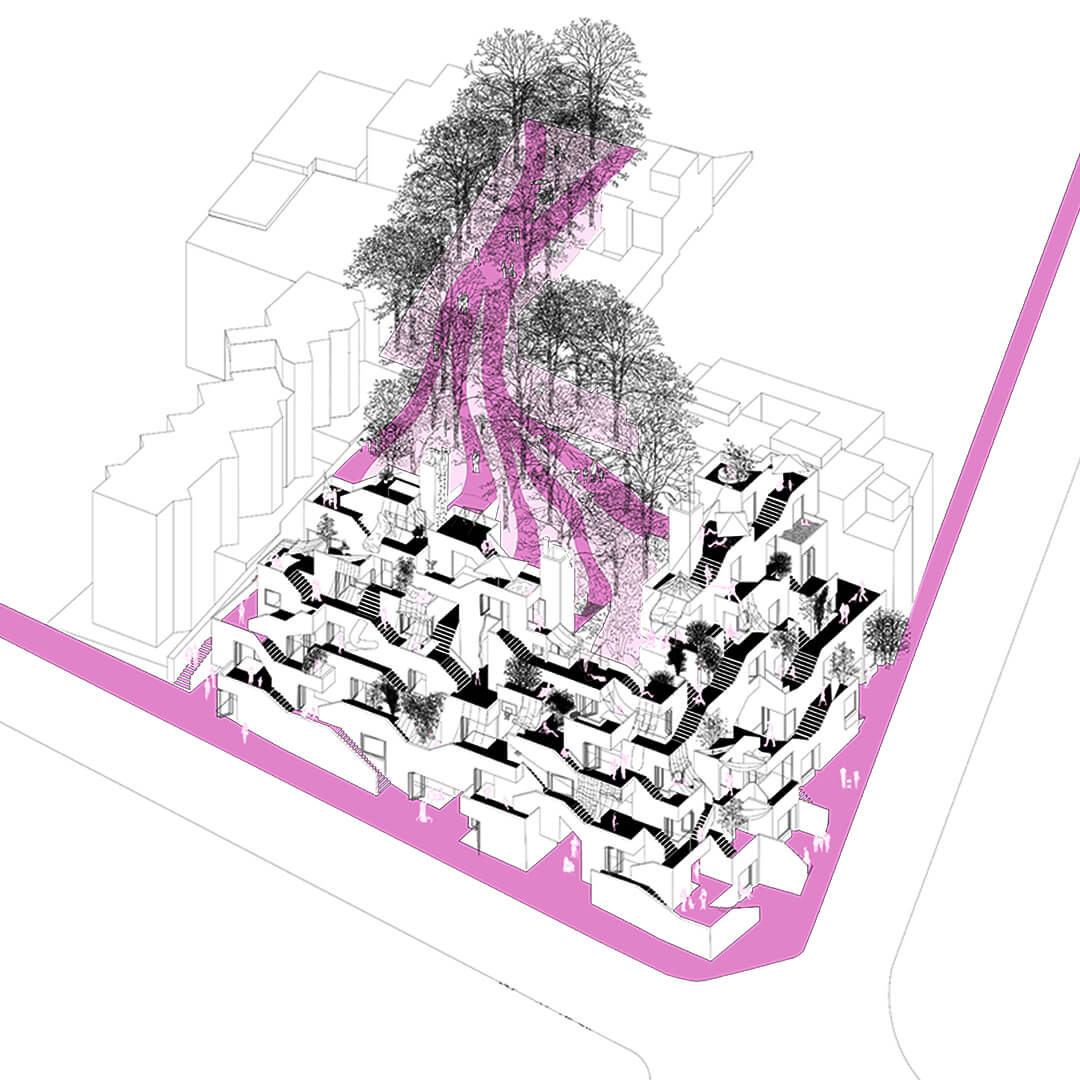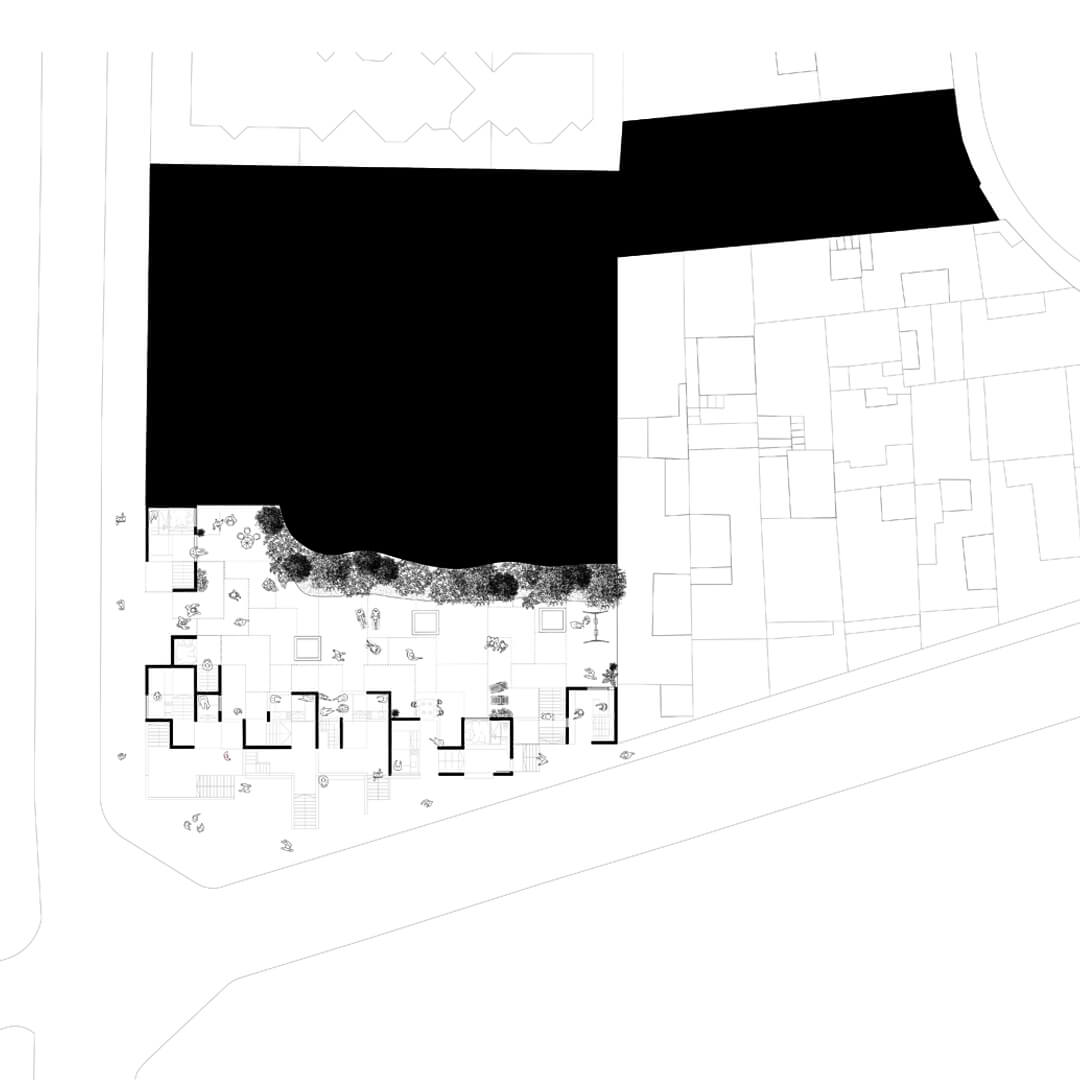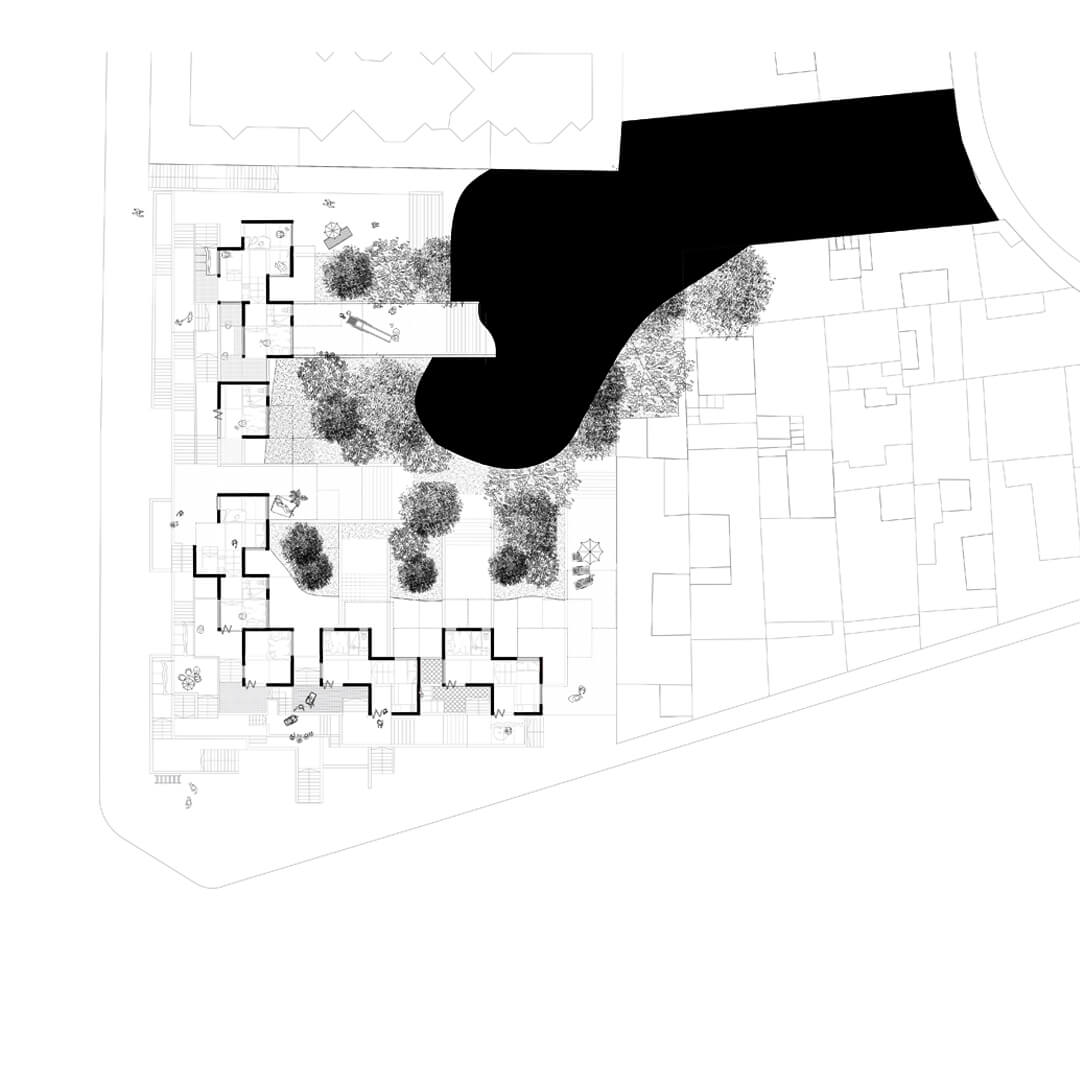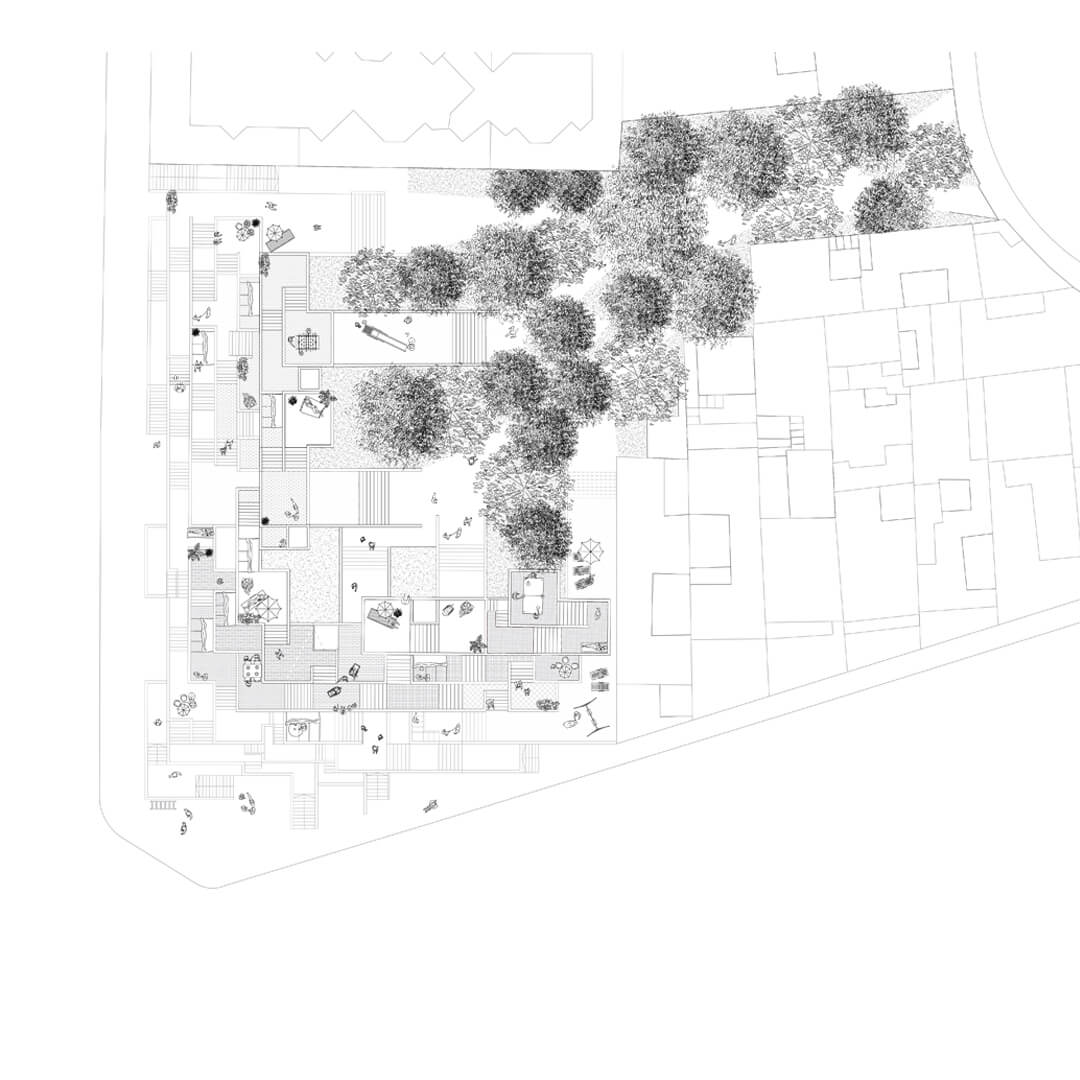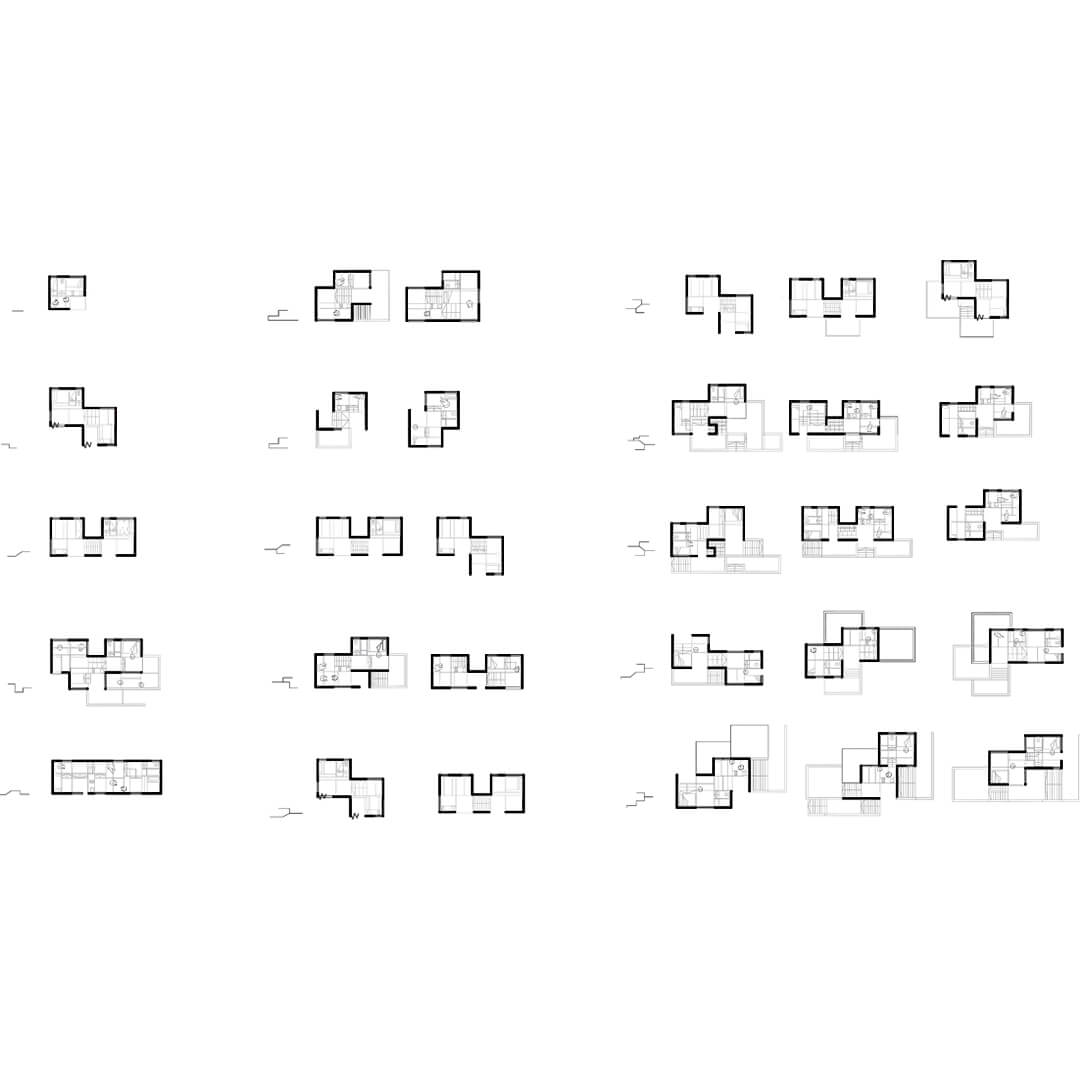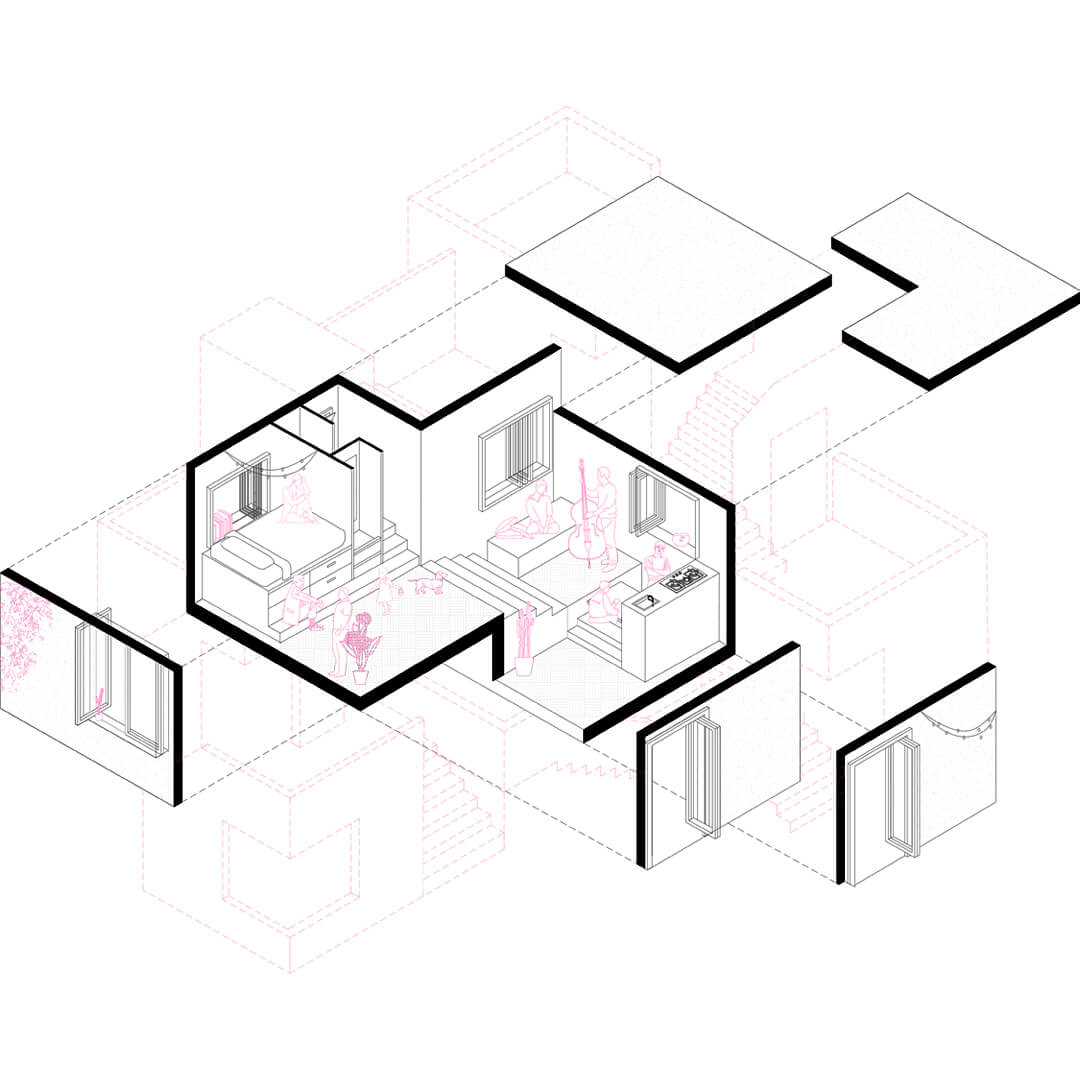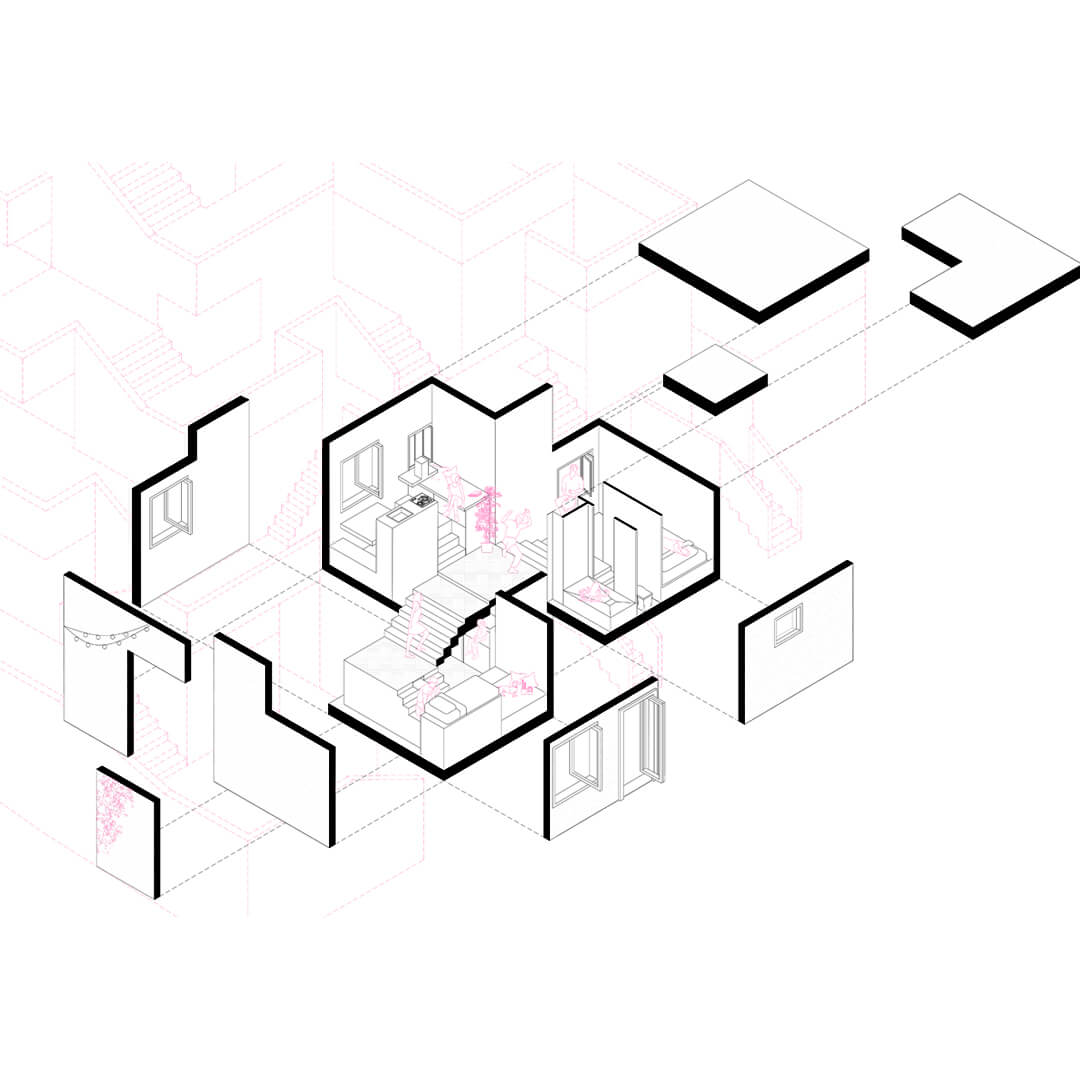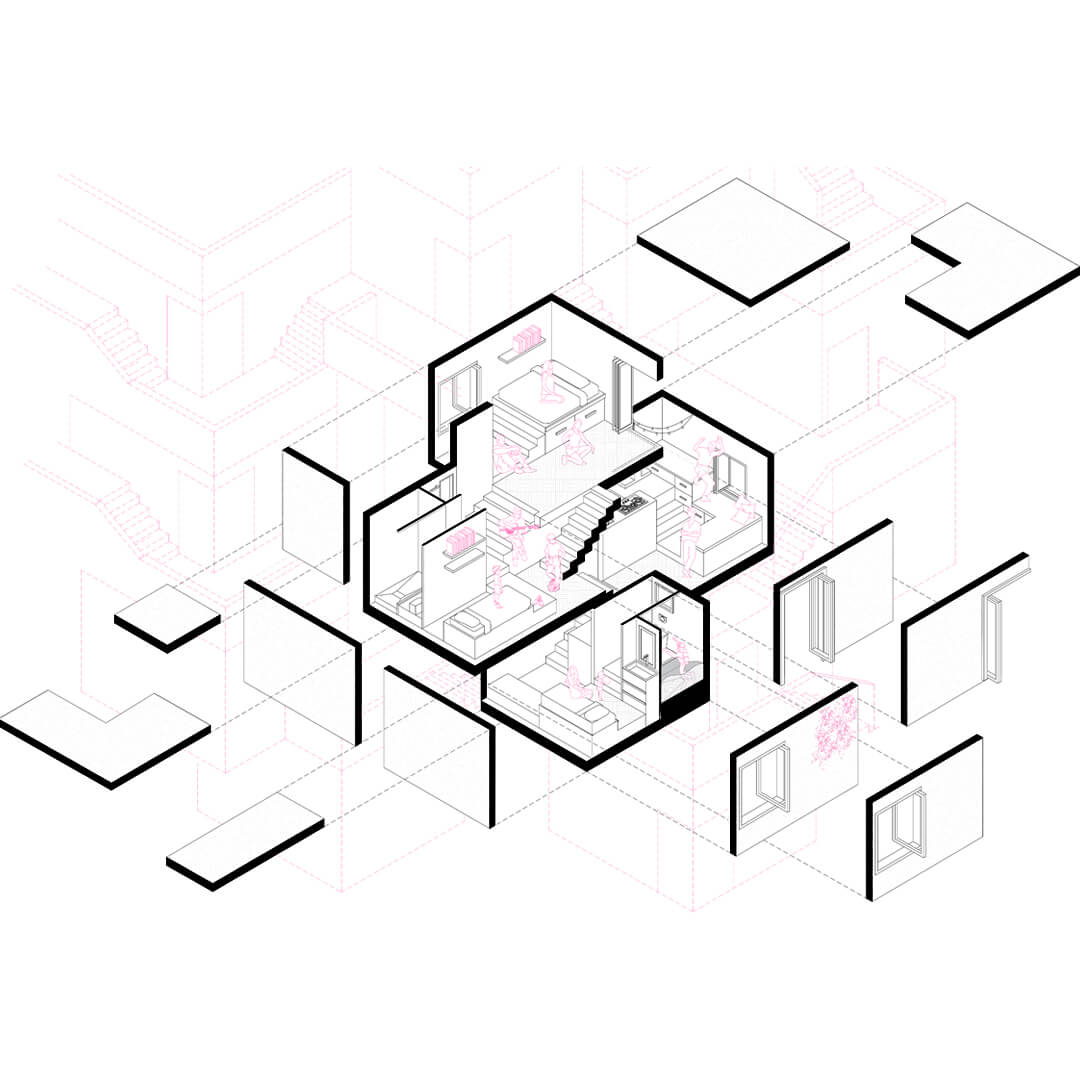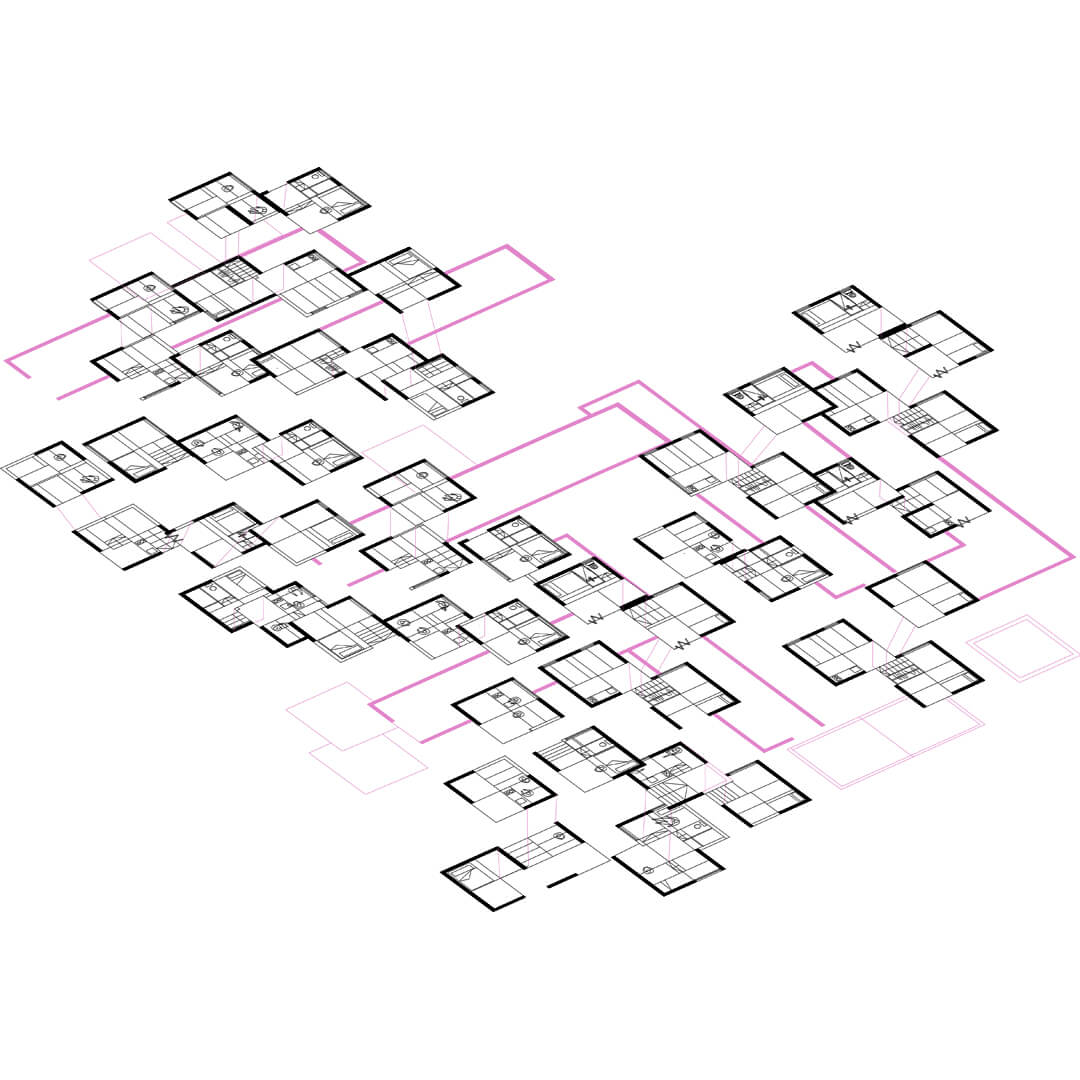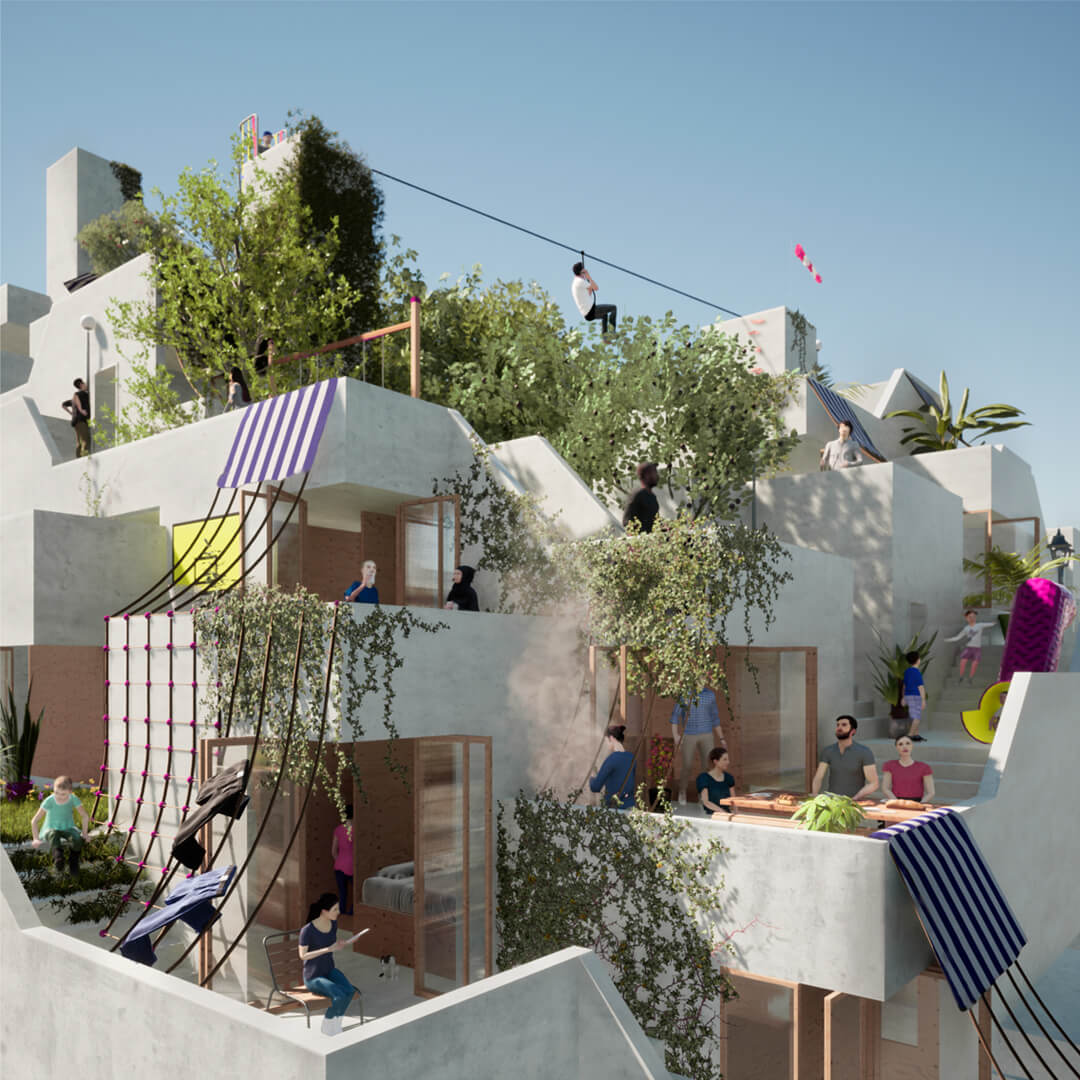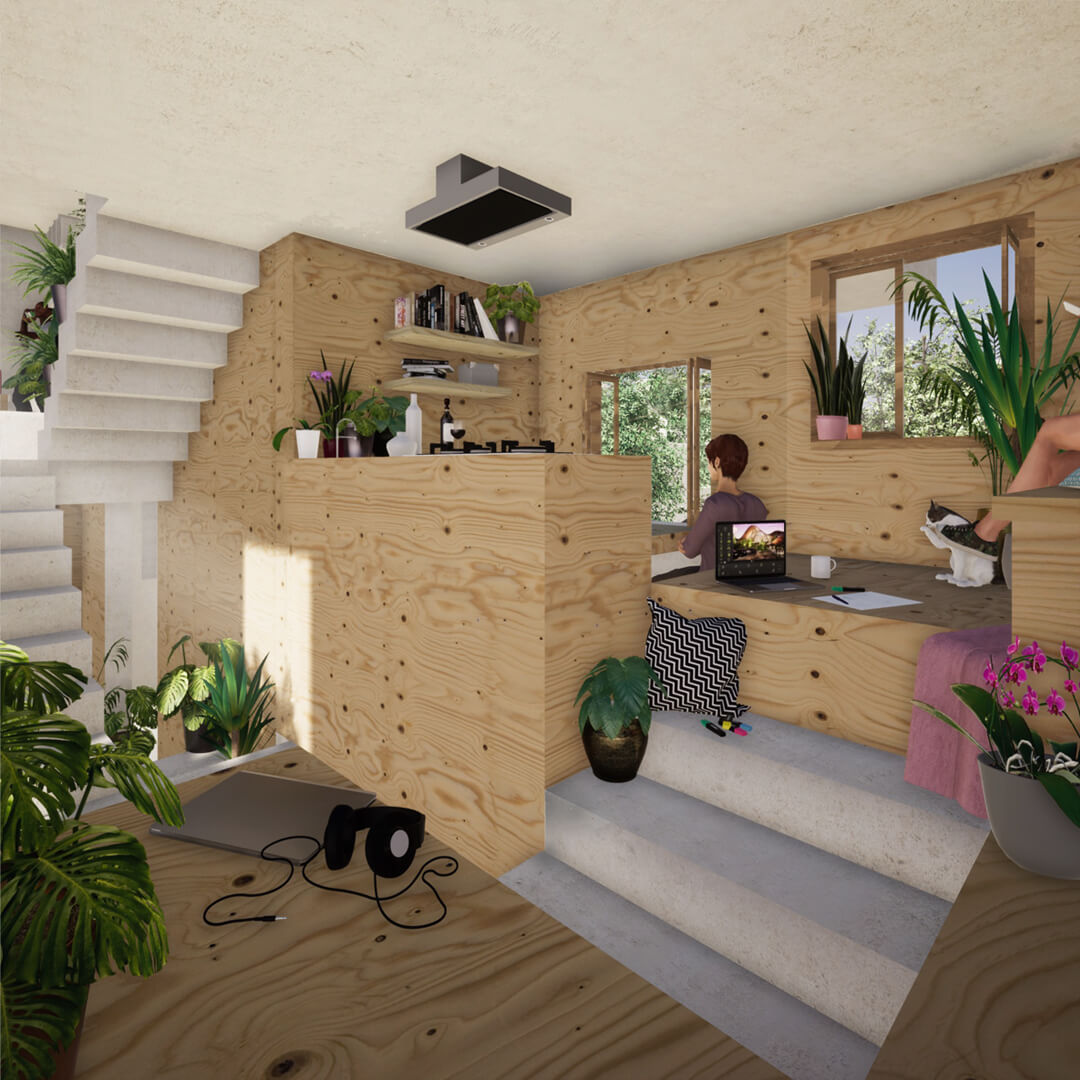Laura Bravo+Silvia Prujà
¿Can you live on a ladder? A ladder as a way of life. A ladder on all scales. A ladder that manages to unite people while generating life around them. The terms comfort and unevenness seem to be contradictory, but in the project they merge to create a more interrelated and more human lifestyle.
Naked eye? A castle of messy boxes with no apparent rhythm embraced by a river of interior vegetation that assimilates the whole to an oasis in the middle of a frenetic city such as Barcelona. The reality, but, much further from this first impression, is a controlled cascade of intertwined rooms that in their interstices create unique spaces of relationship, contemplation and life.
Different types of housing are found within the project, from a house created by the intersection of two boxes, to the union of four boxes. The model of life within them is a particular one; It is to turn the unevenness into a positive experience, it is to take advantage of the staircase as a multipurpose furniture creator of spaces endowed with intimate and special conditions, but that invite group life, currently called co-living. This succession of heights within the house has the ability to form small privacy nooks, as well as other hinge points, community points and more fluency where the difference in height is used to generate cross views and shared moments between the inhabitants.
However, we find another piece, not yet cited, in this network of cubes, perhaps more discreet, but with a fundamental function for the whole: the finger. This manages to formalize the union of the whole, it will be the meeting space, the wild card and articulator space of life. It will be a nexus, a corridor space that will stiffen the entanglement of cubicles thanks to this connection with the mainland. Therefore, it will become a support, not only structural, but also a support for life, in charge of supplying the inhabitants with multipurpose community spaces. It will be where the links between the inhabitants are truly born, it will be everyone’s home.
Not only the interior life of the cubicles is sought, but also the exterior. We are particularly interested in the links between exterior and interior, and these are achieved in different ways; through the openings in the façade and with the same generation of cascading terraces. As for the openings, we open ourselves to the outside in singular points where the relationship with the outside world is necessary, these are moments full of intentionality. The window, therefore, becomes a prosthesis that enriches the habitable complex, and suddenly, the window sill becomes one more space in the house, one capable of creating unique sensations of intimacy and reflection. The terraces, almost as if they were an extension of the house, promote movement and life from doors to outside the cube, extrapolated to what the streets would be; meeting points, chatting, rubbing.
In an instant the two concepts intertwine. The doors and large windows open onto the terraces and the limits are blurred. You no longer know if you are inside or outside, everything becomes one. This is, in a nutshell, the magic of the ladder.
Authors: Laura Bravo+Silvia Prujà.
Location: Barcelona, Spain.
University: ETSAB.
Year: 2020
